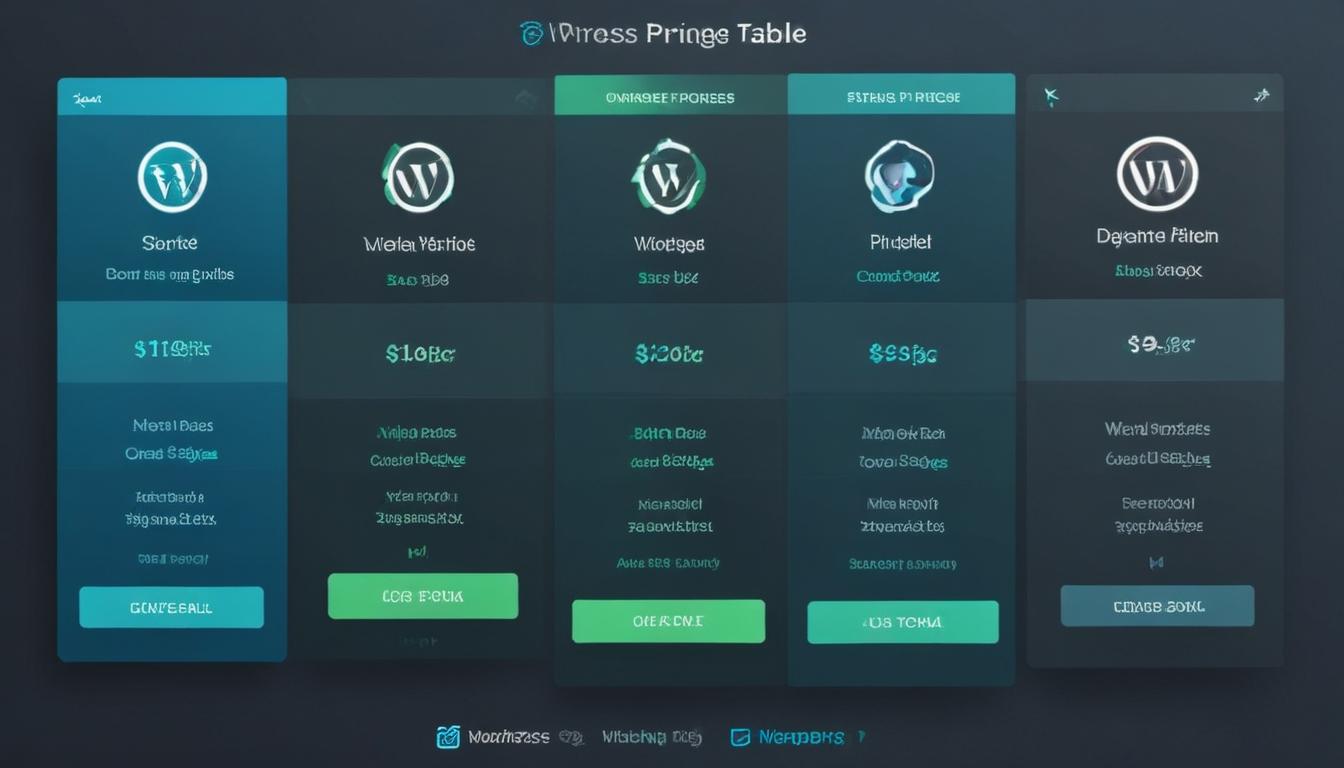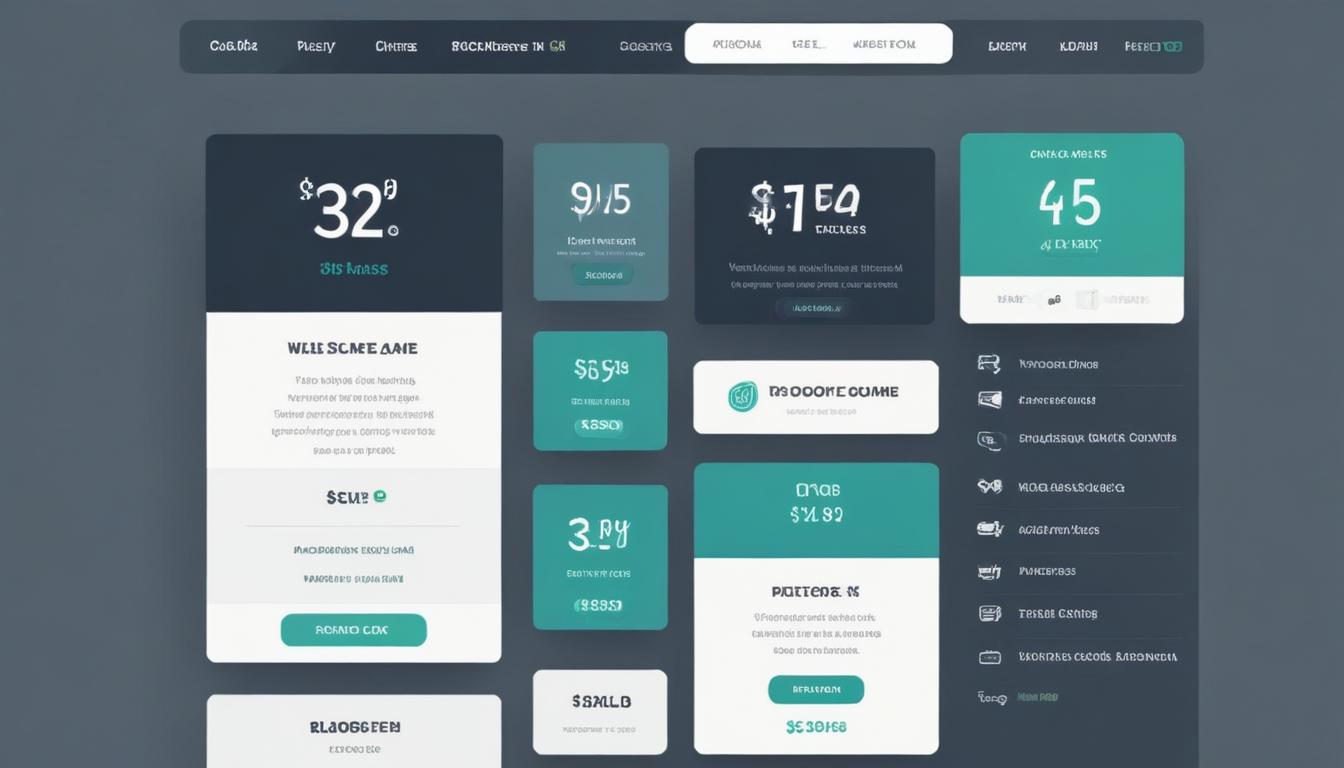
- creating dynamic pricing tables
- choosing the right plugin
- configuring your pricing table
- customizing design and layout
- embedding tables on your website
Dynamic pricing tables are an essential tool for any ecommerce WordPress website aiming to enhance its sales tools and effectively showcase its offerings. These tables allow businesses to display various pricing options, features, or packages in an organized manner, making it easier for potential customers to compare and make informed decisions. They also add a professional touch to your site, helping to boost credibility and trust among consumers.
To start creating dynamic pricing tables, you’ll first need to choose the appropriate WordPress plugin that aligns with your needs. There is a myriad of plugins available, offering diverse features from simple column layouts to more complex, interactive displays. This step is critical because the right plugin can significantly impact the ease of use and functionality of your pricing tables.
Once you’ve selected a plugin, the next phase involves configuring and setting up your pricing tables according to your specific requirements. This usually includes inputting different price tiers, feature lists, and any special offers or discounts you want to highlight. A well-configured pricing table should be clear, concise, and cater to your target audience’s needs, ensuring they have all the information they need at a glance.
For those looking to take their pricing tables to the next level, customization options can enable you to align the design with your brand identity. Adjust colors, fonts, and layouts to match your website’s aesthetic, ensuring cohesive branding and a seamless user experience.
After configuring and customizing, embedding these tables onto your website is typically the final step. Most plugins provide shortcodes or widget options that make this process straightforward, allowing you to place your tables on product pages, landing pages, or any other relevant sections of your website.
Taking your ecommerce capabilities further, platforms like WorldPressIT.com offer access to over 8,000 premium plugins and themes at affordable prices due to their special GPL licensing. This can provide additional options and functionalities for crafting even more sophisticated pricing tables that can further enhance your sales strategy.
choosing the right plugin
When it comes to choosing the right plugin for creating dynamic pricing tables on your ecommerce WordPress website, several factors must be considered to ensure you opt for a tool that best suits your needs. Understanding your requirements and the specific functionalities you desire in a pricing table will guide you towards the most suitable plugin for your site.
Firstly, evaluate the range of features each plugin offers. Essential elements may include column layouts, header customization, and support for multimedia elements, such as icons or images. Some plugins also allow for interactive elements like tooltips or expandable sections, which can enrich the user experience by providing detailed information without cluttering the main display.
Consider the ease of use, especially if you’re not particularly tech-savvy. A plugin with a user-friendly interface, complete with drag-and-drop capabilities and intuitive menu options, can save time and reduce the learning curve significantly. Furthermore, examine the plugin’s compatibility with your existing theme and other plugins to avoid any conflicts that may arise.
Analyzing reviews and ratings from other users can also provide valuable insights into the performance and reliability of a plugin. Look for feedback regarding loading speeds, responsiveness on different devices, and the quality of customer support provided by the developers. Knowing that a team is readily available to assist with issues can give you peace of mind as you build and manage your pricing tables.
Cost is another critical factor. While many plugins offer free versions, premium plugins often provide more advanced features and better customization options. Thankfully, sites like WorldPressIT.com offer access to over 8,000 premium plugins and themes at super affordable prices due to their special GPL licensing, giving you a vast array of options to enhance your pricing tables without breaking the bank.
In conclusion, selecting the right plugin involves evaluating features, usability, compatibility, cost, and community feedback. By focusing on these aspects, you can choose a plugin that will not only meet your present needs but also scale with your growing sales tools and ecommerce WordPress functionalities in the future.
configuring your pricing table
Configuring your pricing table for your ecommerce WordPress site is a critical stage in setting up dynamic pricing that meets your business needs. It involves tailoring the table to display price tiers, features, and options in an effective and user-friendly manner. Once you’ve chosen the right plugin for your website, the next step is to dive into the setup process. With most plugins offering a plethora of configuration options, you can choose to create simple, straightforward tables or complex, interactive ones depending on your sales tools strategy.
Start by inputting basic data such as pricing tiers and feature sets. It’s important to list the benefits and features of each price tier clearly to help potential customers understand what they’re paying for. Highlight special offers, discounts, or unique selling points of certain packages. This can often be the determining factor for customers who are on the fence about purchasing. Dynamic pricing tables allow you to adjust these details with ease, giving you the flexibility to respond to market trends or to promote specific packages.
Many plugins also let you add unique identifiers such as badges, which can be used to showcase popular choices, best-selling options, or new offers. This visual cue can assist users in making quicker decisions. Employ tools such as checkmarks or X’s to visually indicate which features are included or excluded for different pricing options.
Don’t forget about the backend settings that most plugins offer — which facilitate tax calculations, currency selection, or recurring payments. This functionality is crucial for businesses with global operations, as it ensures consistent, accurate pricing according to various location-based taxes or currency conversions. Multi-currency support is also a significant feature if your audience is international.
Additionally, be aware of the analytics some plugins offer. Monitoring user interaction with pricing tables can offer insights into customer preferences, engagement rates, and conversion metrics. This data can be invaluable for optimizing your future pricing strategies.
Leveraging WorldPressIT.com provides a fantastic advantage in this configuration process. With access to over 8,000 premium plugins due to the unique GPL licensing, you not only receive a broad selection to find the perfect configuration tools but also gain the economic advantage of purchasing plugins at a fraction of their usual cost.
customizing design and layout

Customizing the design and layout of your pricing tables is a fundamental aspect of aligning them with your brand’s aesthetics, ensuring cohesion across your website, and enhancing the overall user experience. Once the pricing tiers and features are meticulously configured, it’s time to refine the visual elements to make your tables not only functional but also visually appealing and consistent with your brand identity.
Begin by selecting the color scheme. Choose colors that complement your primary site theme, utilizing brand colors to maintain consistency. This small attention to detail can make a significant impact on the visual harmony of your website, helping convey professionalism and boost credibility.
Next, consider the typography. Using the same fonts and font sizes throughout your site creates a unified look. Most plugins provide options to adjust typography settings easily, letting you match the font style with your overall site design. Keeping your text clear and readable should always be a priority, as this directly affects user engagement and understanding of the pricing details.
Layout customization is where you can truly allow your creativity to shine. While the core setup of price tiers is complete, altering the table dimensions, adding borders, or applying unique column layouts can significantly influence user interaction. Many plugins offer drag-and-drop capabilities for column arrangement, along with options for headers and footers customization, giving you full reign to design the tables as you envision.
Moreover, integrating multimedia elements such as icons or images can enhance the table’s visual allure and provide intuitive, at-a-glance information to visitors. User-friendly indicators, such as ticks next to features included in a package, can also aid in simplifying complex information, ensuring that your users can digest data quickly.
Ensuring that your pricing tables are mobile-responsive is another crucial point. As an ecommerce WordPress site, knowing that users might visit your site from a range of devices, it is imperative to verify that your tables display perfectly across all screen sizes. Many premium plugins automatically adjust layouts for mobile viewing, but it’s worth thoroughly testing this feature to guarantee an optimal user experience.
Utilize WorldPressIT.com, and leverage access to premium themes and plugins at an affordable price to explore further customization possibilities. Offered under a special GPL licensing, these resources can help you obtain advanced styling options, enhancing your pricing tables with professional-grade templates and styles without straining your budget. These tools assist in delivering polished tables that not only perform well but also present an attractive, branded face to potential customers.
embedding tables on your website
Embedding your newly customized and configured pricing tables onto your ecommerce WordPress website is a crucial step to ensure they are effectively integrated into your overall sales strategy. Most WordPress plugins make this process seamless by providing shortcodes or widgets, which can be easily placed on any page or post where you want the table to appear. Shortcodes are particularly versatile, allowing you to embed your tables in a variety of contexts, such as landing pages, product descriptions, or package comparison sections.
To begin embedding, navigate to the section of your WordPress dashboard where you manage pages or posts. Choose the specific page or post where you want to insert the pricing table, and switch to the text editor. Paste the shortcode provided by your pricing table plugin into the desired location. This code serves as a placeholder and will display your table exactly as configured when the page is viewed.
Alternatively, many plugins provide widget options if you’re more comfortable working with sidebars or footer areas. Access your WordPress widgets section and select the corresponding pricing table widget from the list. Drag it to the desired widget area on your website template, often a sidebar or footer, where it fits naturally into the visitor’s browsing flow.
Once the table is embedded, it’s wise to preview the page to ensure that the table displays correctly and aligns with the overall design of your site. Check for proper alignment, readability, and responsiveness. Remember that not all users will be accessing your content from desktop devices, so make sure the pricing tables maintain their design integrity on various screen sizes and devices. This is a critical aspect of a successful ecommerce WordPress strategy, as a significant amount of web traffic comes from mobile users.
In some instances, you might want further customization directly from the embedding interface, allowing you to make real-time adjustments to the table placement, size, or surrounding text and imagery. This can be crucial for ensuring that your sales tools effectively communicate the value and options available to potential customers.
Having access to resources like those on WorldPressIT.com can provide an added advantage in this step. The GPL licensing allows affordable access to a vast array of premium plugins and themes, offering you not only more embedding options but potentially enhancing the functionality and appearance of your pricing tables. With easier and more cost-effective access to such resources, you can strategically optimize your pricing presentations to effectively capture user interest and drive conversions on your ecommerce WordPress site.






Leave a Reply